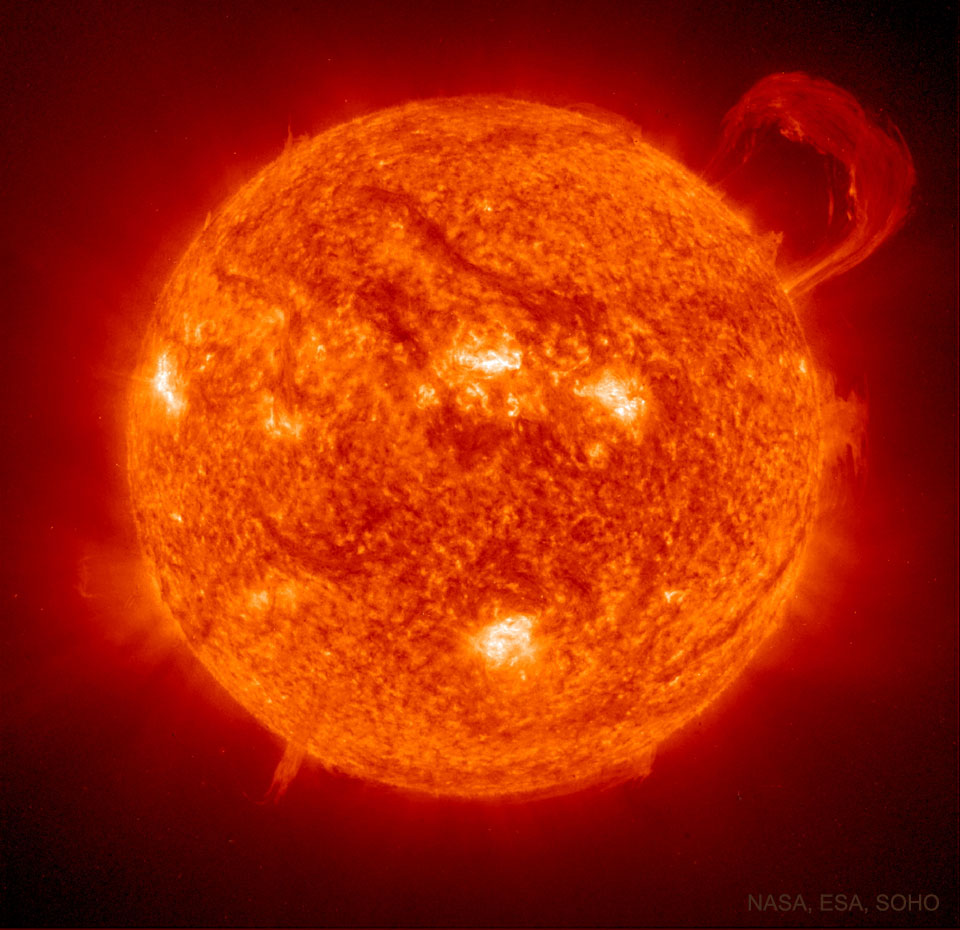SOHO卫星拍摄的日珥
2022年1月30日
A Solar Prominence from SOHO
Image Credit: NASA, ESA, SOHO-EIT Consortium
Explanation: How can gas float above the Sun? Twisted magnetic fields arching from the solar surface can trap ionized gas, suspending it in huge looping structures. These majestic plasma arches are seen as prominences above the solar limb. In 1999, this dramatic and detailed image was recorded by the Extreme ultraviolet Image Telescope (EIT) on board the space-based SOHO observatory in the light emitted by ionized Helium. It shows hot plasma escaping into space as a fiery prominence breaks free from magnetic confinement a hundred thousand kilometers above the Sun. These awesome events bear watching as they can affect communications and power systems over 100 million kilometers away on planet Earth. In late 2020 our Sun passed the solar minimum of its 11-year cycle and is now showing increased surface activity.
Tomorrow’s picture: stellar icons
SOHO卫星拍摄的日珥
影像提供: NASA, ESA, SOHO-EIT Consortium
说明: 气体为何能悬浮在太阳的上方?这是因为从太阳表面伸出的纠结磁场,拘束了电离气体,把它们弯成庞大的悬浮拱环结构。如果这些壮丽的电浆环出现在太阳的临边,就称为日珥。这幅张力十足的清晰影像,是在1999年由轨道SOHO卫星的远紫外光望远镜(EIT)摄于电离氦发光的波段。影像呈现一例冲到太阳上方10万公里高空的狂暴日珥,后来挣脱磁场的束缚,将炽热电浆抛入太空的景象。这种令人敬畏的事件值得特别注意,因为它们会影响到1亿多公里之外地球上的通讯和电力系统。我们的太阳在2020年底离开11年周期的极小期,目前其表面活动在逐渐增加之中。
明日的图片: stellar icons

